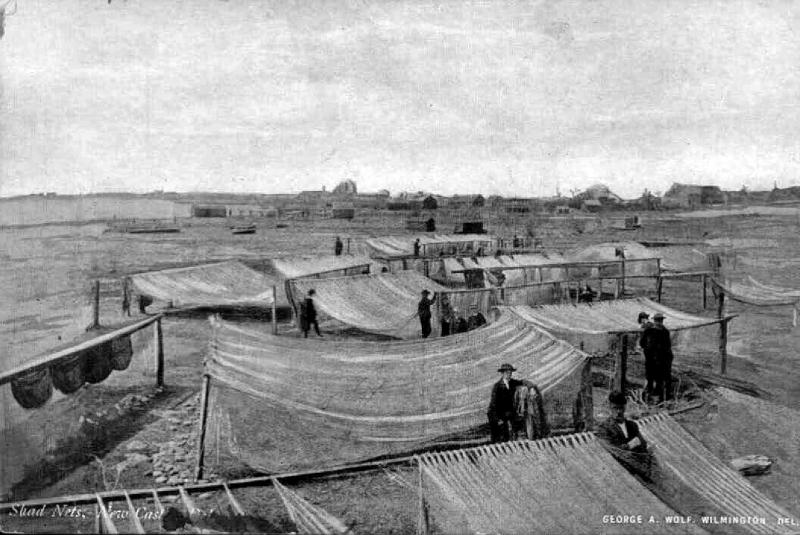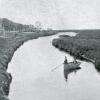Shad nets drying along the Delaware in early 1900s
This photo shows another form of net drying, different from the net reels used at one time by the menhaden fishery in Lewes from the early 1900s. These nets are near the banks of the Delaware River in New Castle County and were used to catch American shad during their spring spawning run up Delaware bay and river.
Shad are just now starting that annual springtime journey, which begins out in the Atlantic Ocean and can cover as many as 2,000 miles. The journey ends when the fish reach the shallow and often gravelly bottomed waters at the head of rivers like the Delaware where females deposit their eggs which are then fertilized by males traveling along beside them.
As a food fish, shad are prized primarily for their sets of roe. As a game fish, they are valued by anglers for their feisty fights and runs - earning them their reputation as the poor man’s tarpon. Though deteriorating water quality led to a steep decline in shad populations in the late 1900s, environmental efforts have improved water quality in rivers like the Delaware, resulting in a welcome resurgence in American shad populations.





















































